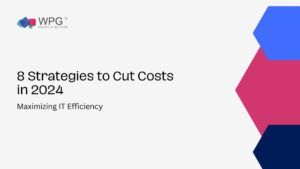
As technology underpins nearly all operations, average annual global IT spending now exceeds $4 trillion on essential infrastructure powering enterprises daily. Yet excess waste still lurks unseen across groups struggling to balance tight budgets meeting relentless demands.
This blog compiles nine insider techniques maximizing existing IT investments under constraints – spanning centralized procurement optimizations to right-sized access controls and productivity tracking – combining to save well over 35% sustainably without hampering digital capabilities advancing user experiences.
Table of Contents
Especially amidst high inflation, scrutinizing controllable technology expenses merits intensified executive focus:
Margin Pressures – Navigating sustained higher costs demands balancing valued innovation against acceptable profit guardrails across all expenditures passed to customers.
Subscription Bloat – Despite efficiencies, SaaS app sprawl still bloats 30%+ from outdated and dormant legacy platforms accumulating faster than overtaxed admins identify independently.
Business Digitization – With revenue processes now technology dependent, fragmented upgrades risk work stoppages from inadequate resilience planning.
Essentially distraction strained IT groups unrelentingly fight urgent priority chaos struggling to reinvest savings into growth. Thus partnering objective cost optimization experts illuminates overlooked areas prime for dramatic improvements.
Mandating prudent technology standards minimizes product variability immediately improving bulk purchasing power through enforced contracts – balancing flexibility minimizing shadow IT. Centrally overseeing agreements prevents overpaying premiums long run
Instituting pilot validation requirements ensures proposed solutions demonstrate clear necessity and integration viability through limited initial deployments prior to scale commitments. Proactively modeling total cost hardware ownership over full lifecycles allows timing right asset refreshes balancing value against steep replacement rises.
Quantifying IT projects return on investment (ROI) around concrete speed achieving break even allows leadership objectively balancing innovation aspirations and pragmatism through consistent evidence. Restrict approvals to submissions significantly benefiting organizational priorities.
Standardizing network/server/endpoint support skills maximizes technician fungibility assisting other groups seamlessly preventing attrition risks losing specialized knowledge. Rotation assignments broaden competencies. Appropriately aligning response time urgency expectations to access request criticality guides entitlement policies improving appropriate self service reliance on familiar issues by end users – saving rapid escalations for truly disruptive scenarios.
Migrating static data onto cost efficient cloud archives sustains access at fractions of on-premise storage costs, especially when blended with tiered models optimizing location by retrieval frequency. Auto-scale workloads aligning compute capacity to seasonal traffic patterns prevents over provisioning for peak annual usage.
Self servicing password resets through online portals resolves over 50% common easily self-guided resolutions faster without agent assistance when configured properly – reducing ticket clutter and improving constituent satisfaction.
Documenting workflow drag caused by manual processes informs leadership on potential savings repurposing converted inefficiencies into funding automation systems further maximizing output.
With comprehensive assessments, disciplined change management and accountability enforcing solutions continually evolve supporting strategy over risking stagnation once implemented, organizations embedding perspectives seeking marginal improvements ultimately compound gains through persistent incremental advances.
Sustained success requires acknowledging static system states invite disruption. Commit instead to cultivating adaptable environments sculpted optimizing all resources technology affords – fulfilling changing constituent expectations and needs by delivering experiences outpacing peers.
Are you ready to explore expanded potential within existing infrastructure? Consult unbiased technology specialists who assess platform waste benchmarking exactly where experiential improvements energize transformations specific to your situation. Schedule a free consultation today.
The race rewards those maximizing present conditions most expertly – converting overlooked excess into operational fuel powering discontinuity through reliable partnerships. What savings sit within reach once revealed? Let’s find out.
Indicators include audit failures identifying shelfware waste, frequent urgent budget request emergencies, limited visibility into total cost ownership, reliance on manual IT asset management and lack of metrics quantifying full ROI on capabilities implemented.
Relevant specializations include lifecycle procurement optimization, license consolidation planning, cloud cost reclamation, automation suitability assessment, productivity analytics modeling and multi-year road mapping tying infrastructure advancements directly to revenue and margin gains quarter-over-quarter.
Beyond pure infrastructure, apply efficiency perspectives identifying redundancies around unused SaaS app subscriptions company wide, streamlining business processes through workflows and calculating productivity lift from optimized digital tools proving IT partnership value towards modernization goals to leadership.
Attempting pure “slash and burn” budget reductions without collaborating cross-functionally risks hampering innovation and growth. Pursue balanced efficiency applying technical and workflow enhancements that responsibly elevate output and experiences while still pragmatically conserving costs.
In today's digital world, schools generate and handle more sensitive student data than ever before.…
In current times, the world pandemic has made people appreciate telehealth more. Telehealth refers to…
In today's world of sophisticated cyberattacks and data breaches, traditional security models focused on perimeter…
Haven’t heard of SASE before? You’re not alone. Standing for Secure Access Service Edge, SASE…
The presence of cyber risks could lead to a disruption in the operations of any…
IT teams require more effective approaches to monitor and control devices remotely as remote work…